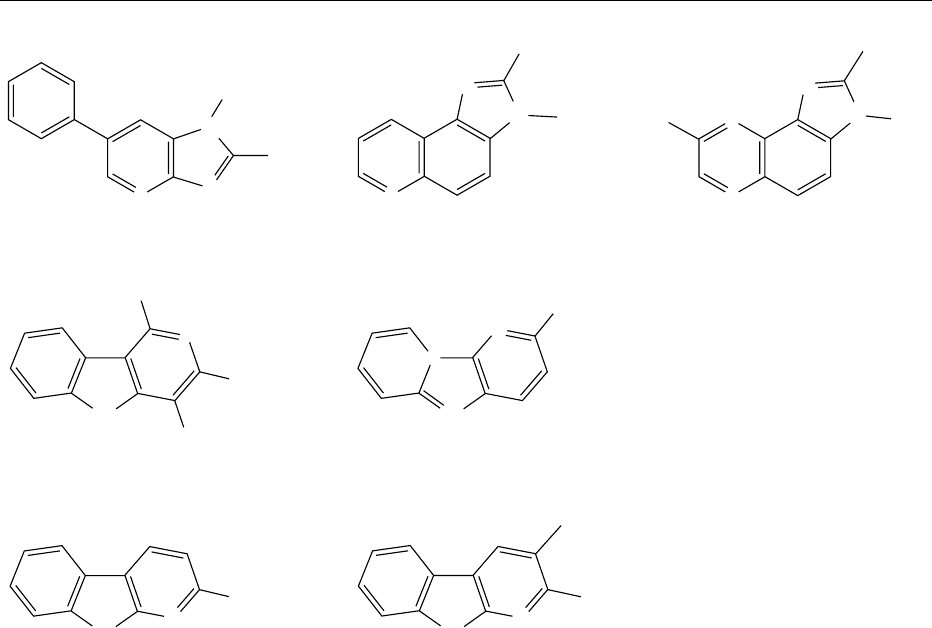Caballero B. (ed.) Encyclopaedia of Food Science, Food Technology and Nutrition. Ten-Volume Set
Подождите немного. Документ загружается.


food item or nutrient as promoter, the relative risk
associated with the nutritional factor increases
with the prevalence or the abundance of the
unknown initiator.
.
0010 When many nutritional factors are examined in the
context of a particular study, multiple comparisons
can generate both false-positive and false-negative
results.
.
0011 Food patterns, for instance the Mediterranean diet,
may have effects that are considerably different to
those of the constituent foods or nutrients because
of complex interactions.
.
0012 Interindividual variability of certain food items
or nutrients may be too small in comparison with
the corresponding intraindividual variability, thus
considerably reducing the power of analytical epi-
demiological studies. Indeed, in many populations,
the diet may be too uniform and etiologically
important food items may be too common or too
rare to allow statistical substantiation of risk dif-
ferentials with standard analytic epidemiological
studies.
.
0013 Energy intake may be an important cause, an
equally important confounder or an indicator of
bias, particularly in case-control studies. Control
of energy intake is thus necessary whenever par-
ticular foods or nutrients are evaluated.
Epidemiological Evidence on the Nutritional
Etiology of Cancer
0014 The effect of diet on cancer occurrence is poorly
understood in molecular or mechanistic terms,
although it is generally assumed that dietary factors
act at a late stage in the long process of carcino-
genesis. Several patterns have emerged, however,
from the many epidemiological studies that have
been undertaken during the last 30 years on the rela-
tion between diet and cancer, and these are summar-
ized in Tables 1–4. The associations are distinguished
into convincing, probable, and possible, and can be
either positive (increasing intake of the dietary factor
increases cancer risk) or inverse (increasing intake of
the dietary factor reduces cancer risk).
0015Table 1 refers to the cancer risk implications in
relation to the intake of major food groups. Vege-
tables and, to a slightly lesser extent, fruits are in-
versely associated with risk for several forms of
cancer. There is also evidence that intake of red
meat increases the risk for some forms of cancer,
particularly cancer of the large bowel.
0016The collective evidence for macronutrients, as sum-
marized in Table 2, is considerably weaker for obvi-
ous reasons. In the absence of long-term randomized
intervention studies, the evidence concerning macro-
nutrients is derived from the evidence concerning
food groups with additional uncertainties introduced
by variability in food composition tables and analyt-
ical methods, as well as by uncontrollable confound-
ing due to the possible operation of unidentifiable or
immeasurable factors that tend to coexist with some
of the macronutrients.
0017Table 3 summarizes the risk implications for
major forms of cancer by intake of selected micro-
nutrients. Although the study of micronutrients
shares the same constrains as that of macronutrients,
tbl0001 Table 1 Risk implications for major forms of cancer by consumption of major food groups
Cancer site Cereals Pulses Vegetables Fruits Meat (red) Fish Dairies Eggs Sugars
Mouth/pharynx ### ###
Nasopharynx
Esophagus ### ###
Stomach ### ###
Large bowel ## # "" " "
Liver #
Gall-bladder
Pancreas ##"
Larynx ## ##
Lung ### ##
Breast ## ##
Endometrium ##
Cervix uteri ##
Ovary ##
Prostate #""
Urinary bladder ## ##
Kidney #"
###, convincing inverse association; """, convincing positive association; ##, probable inverse association; "", probable positive association; #, possible
inverse association; ", possible positive association.
796 CANCER/Epidemiology

this table appears more informative than Table 2 for
three reasons, two of which are purely artificial. First,
of the many micronutrients, only those for which
some evidence exists are included. Second, several
carotenoids are included in the single column dedi-
cated to these compounds. Thus, the evidence for
lung cancer mostly refers to b-carotene, whereas
the evidence for prostate cancer refers almost exclu-
sively to lycopene. The third reason, which is more
substantive, is that the physiologic and pathophysio-
logic effects of certain micronutrients have been
extensively studied, so that the criteria of biologic
plausibility can be more successfully relied upon for
micronutrients rather than for macronutrients.
For instance, several carotenoids, vitamins C and E,
and selenium have been intensively studied on
account of their experimentally documented antioxi-
dant potential.
0018Table 4 refers to nonnutrients and nutritional cor-
relates like height, obesity, and physical activity.
Entries in the same column do not imply identical
products or processes. For instance, alcohol causes
liver cancer through cirrhosis and cancer of the
esophagus and larynx, mostly through interaction
with tobacco smoking, and cancer of the breast
possibly by increasing levels of estrogens. Moreover,
tbl0002 Table 2 Risk implications for major forms of cancer by consumption of macronutrients
Cancer site Protein Starch Fiber Saturated lipids Monounsaturated lipids Polyunsaturated lipids
Mouth/pharynx
Nasopharynx
Esophagus
Stomach "
Large bowel "#"
Liver
Gall-bladder
Pancreas ""#
Larynx
Lung "
Breast #
Endometrium #"
Cervix uteri
Ovary
Prostate "
Urinary bladder
Kidney
###, convincing inverse association; """, convincing positive association; ##, probable inverse association; "", probable positive association; #, possible
inverse association; ", possible positive association.
tbl0003 Table 3 Risk implications for major forms of cancer by consumption of selected micronutrients
Cancer site Vitamin A and carotenoids Folate Vitamin C Vitamin D Vitamin E Calcium Selenium
Mouth/pharynx #
Nasopharynx
Esophagus ##
Stomach ###
Large bowel #####
Liver
Gall-bladder
Pancreas #
Larynx
Lung ####
Breast #
Endometrium
Cervix uteri ###
Ovary
Prostate ## # #
Urinary bladder
Kidney
###, convincing inverse association; """, convincing positive association; ##, probable inverse association; "", probable positive association; #, possible
inverse association; ", possible positive association.
CANCER/Epidemiology 797

coffee and mate are mixtures that have both
similarities and differences. Lastly, the effect of
obesity may refer to stages of carcinogenesis that are
not necessarily identical in the various forms of
cancer. At the extreme, obesity among premenopau-
sal women reduces the risk of breast cancer, whereas
it considerably increases this risk among postmeno-
pausal women.
Additives and Contaminants
0019 Some readers may be surprised by the absence of a
table referring to additives and contaminants that are
frequently reported as carcinogens in the lay press.
There are several reasons for this. First, the intake of
additives and contaminants cannot be documented
in most epidemiological research. Second, additives
and contaminants are extensively scrutinized in
laboratory assays, and whenever evidence incrimin-
ates them as carcinogens, these are removed from
the diet. Third, the alleged breast carcinogenicity of
organochlorine compounds, which can be measured
in the blood or adipose tissue, has not been docu-
mented in large and sophisticated epidemiological
investigations; nor has there been any direct epi-
demiological support for a role of nitrosamines in
human carcinogenesis. At this stage, the only additive
that is likely to play a major role in human carcino-
genesis is salt. Among dietary contaminants, only
aflatoxin has been conclusively linked to hepatocel-
lular carcinoma and may be causing a nonnegligible
fraction of liver cancer in developing countries.
The suspicion that chlorination byproducts in
drinking water may be involved in urinary bladder
carcinogenesis has not been documented but is cur-
rently under investigation.
Prevention of Diet-related Cancers
0020On the basis of studies in migrants and ecologic
investigations, it has been estimated that diet may
be responsible for up to 30% of cancer mortality in
developed countries. Although we know little about
the mechanisms of diet-related carcinogenesis, we
have a very good idea of what a prudent diet that
reduces cancer in humans should be. This diet should
be high in vegetables, fruits, pulses, and cereals, low
in red meat and salt, and low in saturated fat of
animal origin. Added lipids should be of plant origin,
and, among them, olive oil has a safety record of
several thousand years. Obesity should be avoided,
preferably by increasing physical activity, which, in
itself, can reduce the incidence of colorectal cancer
and, perhaps, other forms of cancer as well. Regular
physical activity during childhood and adolescence
may also slow down excessive growth, as reflected
in attained height, and may have beneficial conse-
quences on several cancer types. Alcohol, which is
known to protect against cardiovascular diseases,
should be consumed in moderation, particularly by
women, because it contributes to the causation of
cancer at several sites, including the breast.
See also: Aflatoxins; Alcohol: Metabolism, Beneficial
Effects, and Toxicology; Antioxidants: Natural
Antioxidants; Cancer: Carcinogens in the Food Chain;
Carcinogens: Carcinogenic Substances in Food:
Mechanisms; Colon: Cancer of the Colon;
Contamination of Food
tbl0004 Table 4 Risk implications for major forms of cancer by exposure to selected nonnutrients and nutrition-related indicators
Cancer site Alcohol Salt Coffee Hot drinks Height Obesity Physicalactivity
Mouth/pharynx """ " (mate)
Nasopharynx ""
Esophagus """ "" (mate) ""
Stomach " """
Large bowel " " " ###
Liver """
Gall-bladder ""
Pancreas "
Larynx """
Lung
Breast "" """ ##/""" #
Endometrium """
Cervix uteri
Ovary
Prostate "" #
Urinary bladder "
Kidney ""
###, convincing inverse association; """, convincing positive association; ##, probable inverse association; "", probable positive association; #, possible
inverse association; ", possible positive association.
798 CANCER/Epidemiology

Further Reading
Lagiou P, Trichopoulou A and Trichopoulos D (2002) Nu-
tritional epidemiology of cancer: accomplishments and
prospects. Proceedings of the Nutrition Society. 61:
217–222.
MacMahon B and Trichopoulos D (1996) Epidemiology:
Principles and Methods, Second Edition. Boston: Little
Brown.
Willett W (1998) Nutritional Epidemiology, 2nd edn. New
York: Oxford University Press.
Willett WC and Trichopoulos D (eds) (1996) Nutrition and
cancer. Cancer Causes and Control 7: 3–180.
World Cancer Research Fund and American Institute for
Cancer Prevention (1997) Food, Nutrition and the Pre-
vention of Cancer: A Global Perspective. Washington,
DC: World Cancer Research Fund and American Insti-
tute for Cancer Prevention.
Carcinogens in the Food Chain
M J Prival, United States Food and Drug
Administration, Washington, DC, USA
This article is reproduced from Encyclopaedia of Food Science,
Food Technology and Nutrition, Copyright 1993, Academic Press.
Background
0001 It has become increasingly clear in recent decades that
food can have a substantial effect on cancer risk. This
conclusion is based on the results of both human popu-
lation studies and animal studies. Presently available
evidence indicates that dietary fat may be a risk factor
for cancer and that fresh fruits and vegetables may have
a protective effect. In addition, the human diet contains
specific carcinogenic substances, most, but not all of
which are present at such low levels that their effects on
human cancer rates, if any, are likely to be small. This
article summarizes current information on carcinogens
in the diet that are (1) naturally occurring components
of food, (2) produced by the processing of food, or (3)
added intentionally to food. Carcinogenic contamin-
ants of food, including mycotoxins and pesticides, are
discussed elsewhere. (See Carcinogens:Carcinogenic
Substances in Food: Mechanisms; Carcinogenicity
Tests; Fatty Acids: Dietary Importance; Contamination
of Food; Mycotoxins: Occurrence and Determination.)
Naturally Occurring Components of Foods
Bracken Fern
0002 The toxic effects of bracken fern on livestock have
been observed for a century or more. Bracken fern is
not only toxic, but also carcinogenic when fed to rats
and other experimental animals at high levels.
Both the toxicity and the carcinogenicity are attrib-
uted to the same chemical constituent, ptaquiloside
(Figure 1).
0003Young bracken fronds in the fiddlehead or crosier
stage are used as a salad green in some countries,
including Japan. In Japan, bracken fern is boiled or
pickled before eating to remove the astringent taste;
this reduces, but does not eliminate, its carcinogen-
icity. Milk from cattle that were fed bracken fern has
been found to be carcinogenic to rats. This raises the
possibility that there may be a risk associated with
the drinking of milk in areas where dried bracken fern
is used for bedding in winter or where range-fed cattle
may consume bracken fern; this occurs, for example,
in Turkey and Bulgaria.
Pyrrolizidine Alkaloids
0004Pyrrolizidine alkaloids occur in a variety of plants
used as food and herbal medicines in many parts of
the world, particularly in Africa and Asia. The first
natural substances shown to cause liver tumors were
pyrrolizidine alkaloids from plants. Among the pyr-
rolizidine-alkaloid-containing plants used by humans
are Petasites japonicus Maxim (a kind of coltsfoot),
which is used as a food and herbal remedy in Japan,
and Symphytum officinale L. (comfrey), which is
widely used as a medicinal herb, salad ingredient, or
‘tea.’ Both of these plants have been shown to be
carcinogenic when fed to rats. Senkirkine (Figure 1),
which is found in P. japonicus M., induced liver
tumors when injected intraperitoneally into male
rats, as did symphytine (Figure 1), extracted from
roots of comfrey (S. officinale). Both alkaloids can
also induce mutations in the bacterium Salmonella
typhimurium; this is an indication of their ability to
react with deoxyribonucleic acid (DNA) and may be
relevant to the mechanism of their carcinogenicity.
(See Alkaloids: Toxicology.)
Mate
0005Mate (pronounced ‘mah-tay
´
’) is a beverage that is
widely consumed in southern Brazil, Paraguay,
Uruguay, and northern Argentina. It is made by
brewing the toasted, dried, and aged leaves of a par-
ticular type of tree, Ilex paraguariensis, which is indi-
genous to this area. Several studies have compared
mate consumption among patients with cancers of
the esophagus, larynx, oral cavity, or pharynx with
that of comparable individuals who did not have
these cancers. Taken as a whole, these studies indicate
that consumption of hot mate is probably carcino-
genic to the upper gastrointestinal tract. There is
currently no way of knowing to what extent the
CANCER/Carcinogens in the Food Chain 799

chemicals present in the mate contribute to its
apparent carcinogenicity and to what extent the
high temperature of the consumed beverage is the
problem. Experiments on the carcinogenicity of
mate on animals might help to resolve this question,
but unfortunately, no such experiments have been
reported.
Coffee
0006 The many studies on the possible association
between coffee consumption and cancer in people
have given conflicting results. Overall, the evidence
suggests that coffee consumption may increase the
risk of bladder cancer in humans, but this conclusion
is by no means definitive because of the possible
failure to account properly for other factors that can
affect cancer rates. Some studies, but not others, have
linked high levels of coffee consumption to cancer of
the pancreas, but again, the positive findings may
result from methodological problems. Unfortunately,
currently available studies on the carcinogenicity of
coffee to experimental animals do little to shed light
on the issue owing to the inadequacy of these studies.
Caffeine, which is found in tea, cola drinks, and
cocoa as well as coffee, has not been found to
be carcinogenic when tested in animals. (See Caffeine;
Coffee: Physiological Effects.)
Alkenylbenzenes and Benzene
0007Several alkenylbenzene compounds have been shown
to induce liver tumors in experimental animals. One
of these compounds, safrole (Figure 1), constitutes
80–90% of the volatile oil of sassafras and is also
present at much lower concentrations in certain
spices and flavoring ingredients such as sweet basil,
cananga oil, nutmeg, pepper, tamarind, and ylang
ylang oil. As a result of the carcinogenicity of safrole,
the US Food and Drug Administration (FDA) pro-
hibited the use of safrole or sassafras oil in food,
which resulted in the cessation of its use as the princi-
pal flavoring ingredient in root beer. Furthermore,
sassafras extracts or leaves can only be sold in the
USA if the safrole has been removed from them.
0008Another carcinogenic alkenylbenzene related in
chemical structure to safrole is estragole (Figure 1;
also called methylchavicol), which is found in
H
3
C
CH
3
O
O
OCH
3
O
H
3
C
HO
HO
OH
OH
(a) (b) (c)
(d) (e) (f)
CH
CH
O
NN
CH
3
OH
H
3
C
H
3
C
CH
3
CC
CO
O
H
N
CH
2
OOC
HO
HO
CH
3
CH
2
CH
2
H
H
H
H
3
C
H
3
C
CH
2
H
C
H
2
C
C
H
CH
2
H
2
C
C
H
CC
CO CO
O
O
N
CH
3
CH
3
CH
2
O
OH
H
O
O
fig0001 Figure 1 Chemical structures of some naturally occurring dietary carcinogens: (a) ptaquiloside, the carcinogenic constituent of
bracken fern; (b) symphytine and (c) senkirkine, two pyrrolizidine alkaloids; (d) safrole and (e) estragole, two alkenylbenzene
carcinogens found in foods; and (f) gyromitrin, a toxic and carcinogenic compound found in the false morel mushroom, Gyromitra
esculenta. Reproduced from Cancer: Carcinogens in the Diet, Encyclopaedia of Food Science, Food Technology and Nutrition, Macrae R,
Robinson RK and Sadler MJ (eds), 1993, Academic Press.
800 CANCER/Carcinogens in the Food Chain

tarragon, sweet basil, anise, West Indian bay, fennel,
chervil, and marjoram. The level of estragole from
these sources in a typical diet is very low, and the
resulting risk is, at most, vanishingly small.
0009 Benzene is a well-established human and animal
carcinogen, inducing leukemia in occupationally
exposed workers and several types of cancer in ben-
zene-treated rodents. Traces of benzene have been
detected among the volatile components of a variety
of foods, including oat groats, processed pork and
ham, cooked meats and baked potatoes, and in the
aromas of coffee and cocoa.
Mushrooms and Hydrazine Derivatives
0010 Gyromitra esculenta is one of the mushrooms known
as false morels. It is harvested and eaten by many
people in northern Europe and also in the USA,
although it is poisonous, even fatal, unless properly
dried and boiled. The principal poisonous ingredient
is gyromitrin (Figure 1), which is carcinogenic to
animals and can give rise to the carcinogen methylhy-
drazine under acidic conditions, such as exist in the
stomach. Both methyl-hydrazine and another car-
cinogen, N-methyl-N-formyl-hydrazine, appear to
form during the preparation of false morel for con-
sumption. In fact, cooking must be performed in an
open vessel to allow methylhydrazine to escape;
otherwise, poisoning can occur.
0011 The widely available edible mushroom cultivated
in countries with a temperate climate is Agaricus
bisporus. The principal hydrazine derivative in
A. bisporus, agaritine, has not been shown to be
carcinogenic, but there are reports of carcinogenicity
for some hydrazine derivatives related to compounds
that have been identified in this mushroom. When
uncooked A. bisporus was fed to mice as their only
food for 3 days per week throughout their lifetimes,
tumors developed in several organs. No adequate
study has yet been performed on the carcinogenicity
of cooked mushrooms, and cooking may inactivate
carcinogens that may be present. Additional stud-
ies are needed to determine the significance of the
results with uncooked A. bisporus and the hydrazine
derivatives.
Carcinogens Produced by the Processing
of Food
Alcoholic Beverages
0012 Alcoholic beverages probably constitute the most
widely consumed class of substances for which
human carcinogenicity is definitively established.
The most clearly affected sites are the mouth, phar-
ynx, larynx, esophagus, and liver. Smoking of
tobacco and consumption of alcohol, each of which
is carcinogenic independently, appear to have a far
greater additive effect in inducing human cancer at
these sites, excluding the liver. There are also studies
implying that alcoholic beverages increase the risk
of breast cancer, but the data in this regard are
not nearly as definitive as those for the other sites
mentioned.
0013It is not clear which components of the alcoholic
beverages are responsible for the human cancers.
Animal experiments have failed to show that ethanol
(alcohol) itself is carcinogenic, although the major
metabolite of ethanol, i.e., acetaldehyde, induces
respiratory-tract tumors when inhaled by experimen-
tal animals. Alcoholic beverages contain numerous
chemicals that may contribute to the carcinogenicity
of the beverages, including traces of acetaldehyde,
N-nitroso compounds (including N-nitrosodimethy-
lamine), and urethan (ethyl carbamate). Urethan has
been found in the highest concentrations in ‘stone
fruit’ (i.e., cherry, plum, apricot, etc.), brandies,
sake, and rice wine; at lower levels in various other
types of distilled spirits and wines; and at even lower
levels in beer. Urethan is also found in other fer-
mented food products such as soya sauce, bread,
yogurt, and some cheeses. The carcinogenic risks
from urethan appear to be extremely low and are
probably negligible, but may be somewhat increased
among those who frequently consume alcoholic
beverages with the highest levels of this carcinogen.
(See Alcohol: Metabolism, Beneficial Effects, and
Toxicology; Alcohol Consumption; Smoking, Diet,
and Health.)
Carcinogens Produced by Cooking
0014Under most circumstances, the cooking of meat, fish,
or eggs results in the formation, at very low concen-
trations, of a group of heterocyclic amines that are
very potent mutagens when tested on bacteria. A few
of these mutagens, all of which are carcinogenic when
fed to experimental animals, are shown in Figure 2
with their commonly used abbreviated names.
0015The formation of mutagenic activity has been ob-
served in beef, pork, ham, bacon, lamb, chicken, fish,
and eggs after broiling (grilling), frying, and barbecu-
ing. Other high-protein foods, such as tofu, beans,
and cheese, gave little or no mutagenic activity
when cooked under similar conditions. Beef extract
is also mutagenic. (See Browning: Nonenzymatic.)
0016While the cooking-induced mutagens that have
been isolated are extraordinarily potent mutagens
when tested on bacteria, these chemicals tend to be
only moderately potent as carcinogens. The fact that
the mutagens are found in foods in the parts per
billion range, and the fact that their carcinogenic
CANCER/Carcinogens in the Food Chain 801

potency, in animals at least, does not seem to be
particularly great, are factors that minimize the an-
ticipated risk from these substances. However, expos-
ure to them occurs each time a person eats cooked
meat or fish, and such exposure often occurs at a high
frequency over the lifetime of the individual. While it
is possible to reduce the level of carcinogenic hetero-
cyclic amines by reducing the temperature or time of
cooking, the reduction in carcinogenic risk thus
effected must be weighed against the very real possi-
bility of increased risk from bacterial or parasitic
infection from undercooked meat or fish. Recent
reports concerning the isolation of an anticarcinogen
from fried ground beef also imply that caution is
necessary before recommending any reduction in the
degree of cooking. Microwave cooking without sur-
face browning apparently does not result in the
formation of heterocyclic amine mutagens or carcino-
gens. (See Mutagens.)
0017 Another class of chemicals containing a number of
carcinogens, the polynuclear aromatic hydrocarbons,
are also introduced into food when meat or fish are
grilled, but not when cooking is performed by the
lower-temperature processes of frying, roasting, or
microwave cooking. The pyrolysis of fat dripping on
to the heat source appears to be a major source of this
class of carcinogens. Benzo[a]pyrene and other poly-
nuclear aromatic hydrocarbon carcinogens appear to
be relatively weak carcinogens when administered
orally to experimental animals, but much more
potent when applied to the skin. Whether this is also
true for humans is unknown, and the risks associated
with these carcinogens are difficult to evaluate. (See
Polycyclic Aromatic Hydrocarbons.)
Salting of fish
0018The salting of fish in southeastern China is carried out
for several days using sea salt, followed by drying in
direct sunlight. Sometimes, the fish is permitted to
soften by decomposition. Several studies have found
that the consumption of such salted fish contributes
to the high incidence of cancer of the nasal passages
and pharynx (nasopharyngeal carcinoma) among
Chinese people in southeastern China, Hong Kong,
CH
3
CH
3
CH
3
CH
3
CH
3
CH
3
N
(a) (b)
(d) (e)
(f) (g)
(c)
N
H
N
N
N
N
N
H
N
H
N
N
N
N
N
N
H
3
C
N
N
N
N
N
NH
2
NH
2
NH
2
NH
2
NH
2
NH
2
NH
2
fig0002 Figure 2 Chemical structures of some cooking-induced heterocyclic amine carcinogens. Their commonly used short names are
(a) PhIP, (b) IQ, (c) 8-MeIQx, (d) Trp-P-1, (e) Glu-P-2, (f) A-a-C, and (g) MeA-a-C. Reproduced from Cancer: Carcinogens in the Diet,
Encyclopaedia of Food Science, Food Technology and Nutrition, Macrae R, Robinson RK, and Sadler MJ (eds), 1993, Academic Press.
802 CANCER/Carcinogens in the Food Chain

and Malaysia. Nasopharyngeal carcinoma is rare in
most populations but accounts for about 15% of all
cancer deaths among males in Guangdong Province,
China. Feeding of salted fish to children and to babies
during weaning seems to be a particularly strong risk
factor.
0019 The conclusions of these population studies have
been confirmed by animal studies in which feeding of
Cantonese-style salted fish to rats resulted in the in-
duction of nasopharyngeal carcinomas. N-Nitroso
compounds formed as a result of the salting process
may be responsible for the carcinogenicity of the
salted fish. Nitrate, which contaminates the salt
used to prepare the fish, can be reduced to nitrite
during the processing, and the nitrite can react with
amines in the fish to form N-nitroso compounds.
Since salted fish consumption appears to account for
most of the nasopharyngeal carcinoma cases among
Chinese populations, it must be considered to be a
very high risk factor when consumed regularly, par-
ticularly by children and infants.
Chemicals Added to Foods
Saccharin
0020 Saccharin has been used as a nonnutritive sweetening
agent since 1907, and its safety has been a subject of
debate by scientists and public health officials from
that time. Experiments conducted in the 1970s and
1980s have demonstrated that high levels of sodium
saccharin in the diets of rats resulted in the appear-
ance of tumors of the urinary bladder. In spite of this,
the controversy concerning the safety of saccharin
continues. (See Saccharin.)
0021 Studies on human populations have failed to show
any association between bladder cancer incidence and
the consumption of saccharin or other artificial
sweeteners, but such studies have a limited ability to
detect such associations, even if they exist. The fact
that saccharin is generally not mutagenic, or is very
marginally mutagenic, in a variety of test systems may
imply that saccharin does not interact with DNA and,
therefore, that it may not pose a significant carcino-
genic risk at the usually consumed human doses,
which are far below the doses fed to the rats in the
positive carcinogenicity studies. Saccharin continues
to be widely used in food products around the world.
Cyclamates
0022 Other widely used nonnutritive sweeteners include
sodium cyclamate and calcium cyclamate. In a study
performed in the 1970s, rats that were fed high doses
of a mixture of sodium cyclamate and saccharin
had an increased incidence of bladder tumors. Some
additional studies reported that rats receiving sodium
cyclamate alone developed bladder tumors, but the
results were not statistically significant. Based on
these findings, cyclamates were banned in some coun-
tries, including the UK and the USA. However, many
consider the experimental reports of carcinogeni-
city to be of questionable value, and cyclamates con-
tinue to be approved for use in many countries. As
mentioned above, there are no data from human
populations indicating that consumption of nonnutri-
tive sweeteners are associated with increased cancer
risk, although such studies are, by their very nature,
insensitive. (See Cyclamates.)
Nitrate and Nitrite
0023Sodium nitrate and sodium nitrite are used as preser-
vative agents in cured meats, such as bacon, sausage,
and ham, and in some cheeses. While neither salt has
been shown to be carcinogenic, there is some concern
because nitrite can react with (nitrosate) amines pre-
sent in food to form N-nitroso compounds, many of
which are carcinogens; this reaction can occur under
the acid conditions in the stomach. Since nitrate can
be converted to nitrite either in a food product or in
the mouth or gastrointestinal tract, both nitrate and
nitrite must be considered together in assessing any
possible hazard. (See Curing; Nitrosamines.)
0024There are several dietary sources of nitrate and
nitrite other than cured meats, including vegetables
and some drinking waters. Over the past few decades,
the levels of nitrate and nitrite in cured meats have
been reduced considerably, and the potential for for-
mation of N-nitroso compounds has been further
mitigated by the addition to cured meats of antioxi-
dants such as ascorbic acid, which inhibit the nitrosa-
tion of amines.
0025The addition of nitrate and nitrite to food is only
one of many sources of N-nitroso compounds to
which humans are exposed; salt-preserved fish and
smoked foods are among the other sources of N-
nitroso compounds in the human diet. While there
are some data indicating that nasopharyngeal,
esophageal, and stomach cancer are more common
in populations that consume high levels of nitrate or
certain types of preserved meat or fish, the specific role
of N-nitroso compounds or of added nitrate or nitrite
in human cancer remains to be clarified. It is possible
that the presence of inhibitors of nitrosation in fresh
fruits and vegetables is a factor in explaining why
consumption of these foods appears to have a protect-
ive effect against cancer in human populations.
Butylated Hydroxyanisole
0026The antioxidant butylated hydroxyanisole (BHA) has
been used since 1947 to prevent rancidity in edible
CANCER/Carcinogens in the Food Chain 803

fats and oils and in fat-containing foods. Experiments
performed since 1982 have shown that BHA in the
diet can cause tumors of the forestomach in rats and
hamsters. However, the relevance of this finding has
been questioned because humans do not possess a
forestomach, and their stomachs do not contain the
type of tissue (squamous epithelium) found in
the rodent forestomach. Although humans have squa-
mous epithelium at other sites along the digestive
tract, no tumors have been noted in such sites in
experimental animals. The possibility that BHA may
be a carcinogenic hazard at normal human dietary
levels, which are much lower than the experimental
tumor-inducing levels, has also been questioned on
the grounds that it is not mutagenic in a variety of test
systems. Because of the questions that have been
raised concerning the relevance of the experimental
forestomach tumors induced by BHA to human
exposure at low dietary levels, and the effectiveness
of BHA as an antioxidant in fatty foods, it continues
to be approved for use in many countries around the
world. (See Dietary Fiber: Properties and Sources;
Food Additives: Safety.)
See also: Alcohol: Metabolism, Beneficial Effects, and
Toxicology; Alcohol Consumption; Alkaloids: Toxicology;
Carcinogens: Carcinogenic Substances in Food:
Mechanisms; Carcinogenicity Tests; Contamination of
Food; Curing; Cyclamates; Dietary Fiber: Properties
and Sources; Food Additives: Safety; Mutagens;
Mycotoxins: Occurrence and Determination; Polycyclic
Aromatic Hydrocarbons; Saccharin; Smoking, Diet,
and Health
Further Reading
Aeschbacher H-U (ed.) (1991) Potential carcinogens in the
diet. Mutation Research special issue, vol. 259, nos 3
and 4.
Hayatsu H (ed.) (1991) Mutagens in Food: Detection and
Prevention. Boca Raton, FL: CRC Press.
Hirono I (ed.) (1987) Bioactive Molecules, vol. 2. Naturally
Occurring Carcinogens of Plant Origin. Amsterdam:
Elsevier Science.
IARC Monographs on the Evaluation of Carcinogenic
Risks to Humans: vol. 22, Some Non-Nutritive
Sweetening Agents (1980); Vol. 31, Some Food Addi-
tives, Feed Additives, and Naturally Occurring Sub-
stances (1983); vol. 40, Some Naturally Occurring and
Synthetic Food Components, Furocoumarins, and Ultra-
violet Radiation (1986); vol. 44, Alcohol Drinking
(1988); vol. 51, Coffee, Tea, Mate, Methylxanthines,
and Methylglyoxal (1991) Lyon: International Agency
for Research on Cancer.
National Research Council (1989) Diet and Health: Impli-
cations for Reducing Chronic Disease Risk. Washington,
DC: National Academy Press.
Pariza MW, Aeschbacher H-U, Felton JS and Sato S
(eds)(1990) Progress in Clinical and Biological Re-
search, Vol. 347. Mutagens and Carcinogens in the
Diet. New York: Wiley–Liss.
Weisburger EK (1987) Carcinogenic natural products in the
environment. In: Mehlman M (ed.) Advances in Modern
Environmental Toxicology, vol. X, pp. 243–266.
Diet in Cancer Prevention
I T Johnson, Institute of Food Research, Norwich,
UK
Copyright 2003, Elsevier Science Ltd. All Rights Reserved.
Introduction
0001Cancer is primarily a disease of old age. In societies
where infant mortality and infections have ceased
to be major causes of death, a large proportion of
the population will survive to die eventually of cancer.
Nevertheless, the age-specific incidence of many
common types of cancer varies by a factor of 10-fold
or more between populations, the age-standardized
incidences of particular cancers change within popu-
lations over time, and the risks alter consistently in
populations migrating between countries. Since only
a small proportion of human cancers are directly
attributable to inherited susceptibility, most must be
caused by environmental factors that are, in principle,
avoidable. In their 1981 review of the causes of
cancer, Sir Richard Doll and Richard Peto showed
that, apart from tobacco, which at that time was the
direct cause of 30% of deaths from cancer in the USA,
the largest proportion of avoidable cancer (approxi-
mately 35%) could be attributed to diet. However the
uncertainty attached to this estimate was very high
(10–70%). Surprisingly little has changed in the inter-
vening years. The American epidemiologist WC
Willet has recently suggested that the true proportion
of cancers avoidable by dietary change is probably
between 20 and 42%, but the means by which such
reductions might be achieved remain stubbornly ob-
scure. There are two major sources of difficulty. First,
there are many different types of cancer, and the
various mechanisms by which they arise have only
recently begun to be understood. Second, human diets
are immensely complex and difficult to measure. The
biology of cancer, and the epidemiological evidence
for effects of diet, will be briefly reviewed here, and
the current state of knowledge regarding the role of
dietary factors in the prevention of cancer will be
discussed.
804 CANCER/Diet in Cancer Prevention

The Nature of Cancer
0002 Cell division is fundamental to all life. The human
body begins life with the fertilization of a single cell,
yet by the time maturity is reached the total number
has risen to about 10
13
. Throughout the earliest
stages of development all the embryonic cells divide
constantly and undergo differentiation to form the
specialized tissues and organs. Cell division is
minimal in many adult tissues but those of the
blood-forming organs, the reproductive tissues, and
the epithelia lining the gut continue to divide at a high
rate throughout life. A tumor can be defined as a
localized increase in the number of cells in an organ,
beyond what is necessary for tissue growth and repair,
or for the reproductive needs of the host. Benign
tumors grow relatively slowly, and retain an approxi-
mately normal anatomical location, whereas malig-
nant tumors acquire the ability to invade surrounding
tissues and form secondary tumors in remote organs
such as the liver or brain. Until relatively recently it
was assumed that the crucial abnormality of cancer-
ous cells was their loss of proliferative control, but
their ability to evade apoptosis, the internal pathway
which obliges damaged cells to undergo suicide, is at
least as important.
000 3 Carcinogenesis occurs in stages that can be broadly
characterized as initiation, promotion, and progres-
sion. The earliest event is thought to be the acquisi-
tion of an unrepaired mutation by a single cell. DNA
damage and repair occur constantly, but a mutation
which remains unrepaired, fails to trigger apoptosis,
confers some growth advantage on the cell, and can
be passed on through successive cellular divisions, is
potentially carcinogenic. During the promotion stage,
the normal constraints on proliferation and spatial
location are disrupted by the acquisition of further
mutations within genes essential for the normal
growth and differentiation. At the progression stage
the lesion has made the transition to malignancy and
can give rise to secondary tumors at remote sites. This
multistage model of carcinogenesis is exemplified by
colorectal cancer, which in most cases develops
through the adenoma–carcinoma sequence. Around
40% of all males over 50 in the UK and other western
industrialized countries have one or more colorectal
polyps. Only a few percent of these will ever progress
to carcinomas, but regular screening and removal of
such polyps are an effective, though costly means of
preventing cancer.
Cancer and Populations
0004 Some examples of the geographical variations that
occur in the incidence of important cancers of the
alimentary tract are given in Table 1. These data are
of comparable reliability, and have been selected to
illustrate some important features of cancer incidence
across the globe. For example, colorectal carcinoma
is about 12 times more common in New Zealand than
in India. This cancer is consistently more common in
richer, westernized countries than in the developing
nations of Asia and Africa that have primarily agrar-
ian economies. Cancer of the stomach is much less
consistently related to economic development. The
highest incidence of gastric cancer in the world occurs
in Japan, but rates are also high in other much poorer
countries of eastern Asia, and in Central and South
America. Within countries, gastric cancer tends to
decline with increasing socioeconomic status. The
third example, esophageal cancer, shows an extra-
ordinary degree of geographical variation. In general
it tends to be more common in poorer societies, but
there is a recognized ‘‘esophageal cancer belt’’ which
runs from China through central Asia to Iran with
incidence rates hundreds of times higher than the least
affected countries of the world. Such extremes cannot
be attributed to general economic conditions. They
suggest that the esophagus is exquisitely sensitive to
some combination of environmental conditions
amongst which diet must play a major role.
Cancer and Diet
0005Three types of interaction between diet and the car-
cinogenic process can be envisaged.
1.
0006The diet may contain specific carcinogens or pro-
moters that initiate or accelerate carcinogenesis.
2.
0007The provision of known nutrients and /or energy
may be a key determinant of the body’s suscepti-
bility to cancer.
tbl0001Table 1 Geographical variations in the incidence of major
cancers of the alimentary tract
Country Incidence of carcinoma for both sexes (cases/100 000)
Esophageal Gastric Colorectal
Brazil 13.6 31.3 27.3
Denmark 8.3 12.6 69.3
Germany 7.0 25.3 77.0
India 12.7 8.5 8.0
Israel 3.1 22.1 78.1
Japan 11.6 97.8 68.5
New Zealand 7.9 16.2 98.7
South Africa 22.6 12.6 23.0
Uganda 24.5 12.5 14.4
UK 13.2 17.9 60.7
USA 6.3 11.2 71.2
Data are predicted age-specific incidence rates for the year 2000. Source:
Globocan2000databaseoftheWorldHealthOrganisation,Geneva(http://
www.who.int).
CANCER/Diet in Cancer Prevention 805
